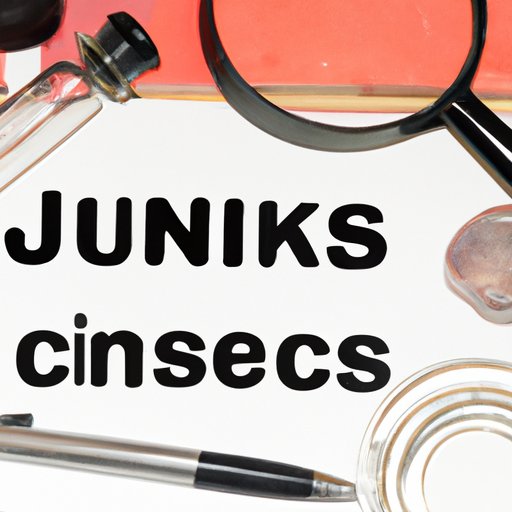Introduction
In criminal investigations, forensic evidence plays an important role in helping to determine the guilt or innocence of a suspect. Unfortunately, some of this evidence has been found to be unreliable due to the use of “junk science”. Junk science is defined as “the application of ideas or methods that are based on insufficient evidence or scientific knowledge” (Merriam-Webster). It is often used in courtrooms to support a particular theory or argument, but it lacks scientific validity and is not accepted by the scientific community.
The use of junk science in forensics has led to numerous wrongful convictions and is a growing concern for law enforcement and the legal system. This article will explore the myths and misconceptions surrounding junk science in forensics and discuss how it is used in criminal investigations. It will also examine the challenges of discerning reliable science from junk science and the implications it has on the justice system.
The Use of Unreliable Forensic Science
The use of unreliable forensic science has become increasingly problematic in recent years. According to a study conducted by the Innocence Project, more than 50% of DNA exonerations involved the use of unreliable or invalidated forensic science techniques. In many cases, these techniques were used to support a conviction, despite the lack of scientific evidence.
One of the most common misconceptions about junk science is that it is only used in high-profile cases. However, this is not true. Junk science is used in all types of criminal investigations, including those involving minor offenses, such as shoplifting. As a result, innocent people can be wrongfully convicted and their lives completely upended.

How Junk Science is Used in Criminal Investigations
Junk science is often used in criminal investigations to support a particular theory or argument. For example, a detective may rely on outdated or discredited fingerprint analysis techniques to identify a suspect. Or, an expert witness may use flawed ballistics evidence to establish a link between a murder weapon and the defendant.
To address this issue, there needs to be a shift towards using reliable science in criminal investigations. This means relying on peer-reviewed research and evidence-based practices, rather than subjective opinions and speculation. Additionally, police officers, prosecutors, and judges should receive training on how to recognize and discard unreliable evidence.

Problems with Junk Science and Its Affects on the Justice System
When junk science is used in criminal investigations, it can lead to wrongful convictions and have devastating consequences for the accused. For example, a person may be wrongly convicted based on false or misleading testimony from an expert witness. Or, they may be convicted based on faulty forensic evidence, such as flawed DNA analysis.
Proving innocence when junk science is used can be difficult, as it requires challenging the credibility of the evidence and the qualifications of the expert witness. Furthermore, it can be hard to discern reliable science from junk science, as both can look convincing to the untrained eye.
Conclusion
Junk science in forensics can have serious repercussions for the justice system, leading to wrongful convictions and tarnishing the reputation of the legal system. To prevent this from happening, it is crucial that reliable science be used in criminal investigations. This means relying on evidence-based practices and peer-reviewed research, rather than subjective opinions and speculation. It is also important for law enforcement officials to receive training on how to recognize and discard unreliable evidence.
In conclusion, it is essential that reliable science is used in criminal investigations to ensure the integrity of the justice system and the safety of innocent people. By shifting towards evidence-based practices and discarding junk science, we can make sure that justice is served.
(Note: Is this article not meeting your expectations? Do you have knowledge or insights to share? Unlock new opportunities and expand your reach by joining our authors team. Click Registration to join us and share your expertise with our readers.)
